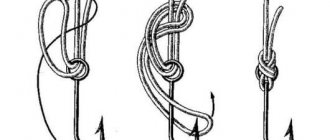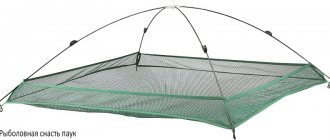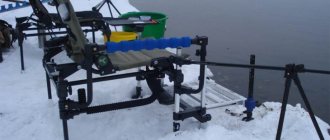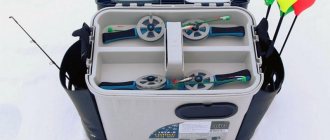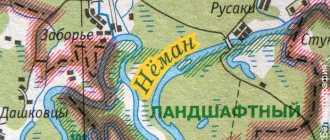Fishing thread is an indispensable attribute of fishing, since the integrity of the structure depends on it. It must withstand the loads at the time of hooking and when landing fish. Let's look at the features of using monofilament for fishing, what are its advantages and disadvantages, and also how it differs from braided fishing line.
As you know, fishing line is divided into two main types - braided and monofilament, which consists of just one thread. We invite you to familiarize yourself with the features of the product, its properties and popular manufacturers of this type of fishing line.
A small educational program
What is monofilament? Monofilament fishing line is a synthetic product. It is made of polymers, nylon and polyethylene. Previously, it was made from horsehair, linen and silk thread. The prefix “mono” means that the fishing line consists of only one strong thread.
Monofilaments are classified by composition, shade, thickness and cross-section. Most often, fishermen use monofilament fishing line with a round section. To produce the product, a method is used in which molten polymers are forced through a special hole with a diameter of no more than 4 mm.
In general, monofilament has the necessary strength, it is wear-resistant and can be used regardless of the characteristics of the reservoir. Products can be either plain or colored, depending on the convenience of the fisherman himself.
Application area
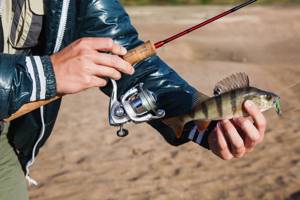
Having understood what monofilament is, he suggests familiarizing yourself with the specifics of the product’s use.
Monofilament line is used:
- as the main line in spinning fishing with ultra-light tackle;
- the transparent option is considered the optimal solution in fidel equipment;
- for equipping a float fishing rod;
- while fishing in the cold season.
Monofilament can be used both for shallow reservoirs for fishing near the shore, and for long casts. When hunting for predators, the optimal thread thickness should be about 0.25 mm; for the rest of the category of fish, it will be enough to choose monofilament with a diameter of up to 0.16 mm.
What diameter of fishing line is needed for spinning
The choice of fishing line diameter is dictated by two important conditions.
- What size fish is the angler going to catch? For medium-sized pike, pike-perch and perch, a 0.2-0.25 monofilament line or braided line with similar breaking characteristics is sufficient.
- In what areas of the reservoir will fishing take place? In clean places, you can use thinner lines than in thickets and snags, where bait snags are possible.
- What fishing line was the reel purchased for? This moment is important for completely filling the spool, which affects the casting distance.
Main characteristics of monofilament
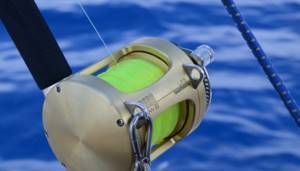
Monofilament fishing line has the same properties as regular fishing line. It can differ in length, calibration, hardness, area of application (for sea or fresh water), and also be floating or sinking.
Monofilament properties:
- calibration - how uniform the monofilament is in diameter along the entire length (you can check this property using a sinker, where the diameter is thicker it will get stuck, this in turn can affect the quality of fishing);
- strength - you can check this quality with a dynamometer at home;
- diameter - checked using a micrometer or optical method;
- rigidity - closely related to strength (this quality depends on how well the process of forming the fishing line and pulling it through a calibrated hole was completed).
Advantages of monofilament fishing line
The most important advantage of monofilament (according to reviews) is its high strength, that is, the ability to withstand significant loads. In addition, it also has elasticity, so it can be used for predators of different sizes.
Advantages of monofilament fishing line:
- strength and elasticity;
- minimum coefficient of friction - suitable for long casting, since the line does not lose speed;
- abrasion resistance - this line can be used for a long time for fishing in reservoirs with a rocky bottom;
- transparency and invisibility in the water - most products are uncolored, but there are also colored threads (some options are painted with fluorescent pigment to control the movement of the bait);
- round cross-section - helps to perfectly wind the fishing line onto the reel;
- most monofilaments do not sink, since their production uses a special material whose density is greater than that of water;
- suitable for winter fishing, as it does not fray and does not freeze with ice at sub-zero temperatures;
- affordable price.
Monofilament fishing line is resistant to environmental factors and therefore has a long service life.
The use of monofilaments in different types of needlework
Monofilament has found use in sewing, beadwork, beadwork and in marking canvas for cross stitch. A thin synthetic thread, no thicker than a hair, has an important quality - invisibility. Thanks to this property, it can be used in almost any type of needlework, replacing conventional woven thread.
Handmade fishing line for sewing
The use of monofilament in sewing can be divided into three large groups:
- industrial tailoring using special machines;
- sewing and repair using a household sewing machine;
- sewing toys and decorative elements by hand.
Wherever the seam must remain invisible , monofilament can be used. On an industrial scale, it is used to hem the bottom of trouser legs and the hem of skirts. The fishing line on large reels is threaded into special hemming machines and operates without replacement for a long time. At the same time, this thread can be used to hem items made from various fabrics, without the need to select colors.
It is possible to hem trousers or shorten a skirt or dress at home without using monofilament thread for sewing. But the use of transparent fiber greatly simplifies the task, makes the seam invisible and the work neat.
Sewing openwork collars, braid or cuffs onto garments also becomes possible using monofilaments. However, it should be borne in mind that a small thickness is not able to withstand heavy loads. Sewing sleeves or legs to the main garment using fishing line is not a good idea.

Assembling soft plush toys requires the use of a large number of hidden seams. To make sewing easier and faster, you can safely use monofilament. Even with a not very neat stitch, seams made from such a thread will not stand out on the craft.
Use in bead embroidery
Monofilament has become an indispensable material for bead embroidery. Its smooth structure makes it easy to place beads on fabric in accordance with the intended design. The thread does not twist and does not fluff when cut.
Monofilament has a “memory” effect , reliably fixing the beads in a given position. Moreover, the fishing line has its own rigidity, which is transferred to the finished product, making the pattern denser and stronger.
Monofilament matching any color is an excellent choice for working with beaded beadwork. You don’t have to change it every time you start embroidering a different color of beads.
Handmade fishing line in beading
To weave voluminous 3D crafts and jewelry with beads, you should clearly understand how rigid the finished product should be. Monofilament for beads is chosen taking into account the requirements for the shape of the craft.
Monofilament and fishing line are most often used to make jewelry of medium and low rigidity. By creating an airy necklace or weightless earrings, you can achieve the stunning effect of a visual absence of any connection between the elements.
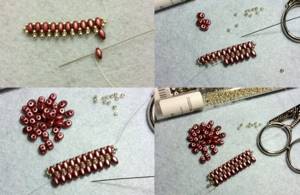
Also, polymer thread is well suited for stitching finished three-dimensional figures with beads. In such work, it is important to increase the rigidity of the toy through embroidery, while the fishing line itself should be hidden from view as much as possible.
You should use a synthetic base in products that you plan to wear frequently. The properties of the material allow jewelry to serve for a long time without deteriorating from friction and moisture. In addition, it has decent elasticity - a huge plus in weaving bracelets.
The use of monofilament in bead weaving does not require the use of a needle, which greatly simplifies the process.
Marking the canvas for embroidery
Needlewomen who are passionate about cross-stitching are well aware of the importance of preparing the material. When the pattern is chosen, the floss threads are selected and the needles are “sharpened”, the painstaking process of transferring the embroidery pattern onto the canvas begins. This is especially true if the canvas is large, and the process promises to drag on for several months or even years. There are various techniques and tools for this.
Lately, marking canvas with contrasting thread . But dividing the canvas into equal squares is not a difficult task, but removing the markings upon completion of the work can cost serious labor and nerves.
In this case, the use of monofilament is preferable and there are several good reasons for this:
- The fishing line is a single fiber; it is not divided at all along the length, which means it will not be possible to sew it to the canvas.
- A thin contrasting thread passes freely between the fibers of the canvas without getting stuck in it.
- The smooth surface facilitates its rapid removal from the product.
- Elasticity and resilience allow the canvas to remain quite soft and do not interfere with fixation in the hoop.
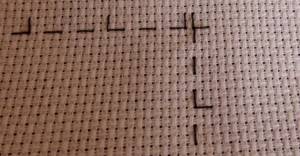
The main disadvantage of marking using monofilament is the preparation time . It is much faster to divide the fabric into segments using a ruler and a special marker, saving a lot of time.
Minuses

With a large number of advantages, monofilament also has a number of disadvantages. Monofilament fishing line, which is made from nylon-containing polymers, can age faster under the influence of moisture, ultraviolet radiation and temperature changes. Also, the product may not be durable enough if it has been stored incorrectly for a long time. When the monofilament dries on the spool, it becomes deformed.
The disadvantages of monofilament also include reduced sensitivity, which can affect when hooking fish. To prevent this, you should pay attention to the quality of the product when choosing. Products from Japanese and German manufacturers have proven themselves best.
Advantages and disadvantages
The advantages include:
- Camouflage qualities (it can be transparent or colored brown or green). You can change the color and choose it so that it is almost invisible against the background of the bottom.
- Shock-absorbing properties (any fishing line has stretchability, each model has its own stretch coefficient). It is this quality that allows you to carry out a soft hook at a long distance and dampen the jerks of the fish at the time of fishing.
- The low coefficient of friction allows for high-quality casting of light baits over long distances. The line passes through the guide rings without any hindrance.
- The slight resistance of the fishing line in the water column facilitates the correct placement of the lightweight bait at the desired depth.
- They produce a fluorescent version of monofilament , designed to control the behavior of the bait during the fishing process.
- It is in an affordable price range , which is beneficial when choosing gear and equipment elements: a regular fishing rod, a simple reel.
Cons: May reduce the sensitivity of the tool and fail when hooking prey.
Line age
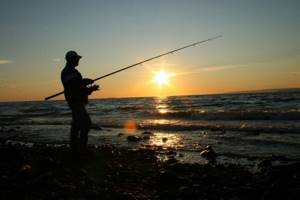
Fishing monofilament has a special property, which is indicated on the packaging - this is the age of the product. You can often see on the label of Japanese products the inscription “fresh, cool”, sports fishing line, for example, with a diameter of 0.14 mm, which has a strength of about 1.5 kg. Such markings in kilograms do not at all refer to the strength of the product, but rather indicate its power. On American products this figure is indicated in pounds, but conditionally.
For fishermen, another characteristic regarding age is important - “fresh” or “old” monofilament. At the same time, it is quite easy to determine the age yourself when purchasing. The old fishing line has a matte surface because microcracks have formed on the thread under the influence of mechanical stress, ultraviolet radiation and heat. The fishing line can age due to improper storage, as well as from the low initial quality of the product. Therefore, it is recommended to store monofilament fishing line in the refrigerator at low temperatures.
Product marking
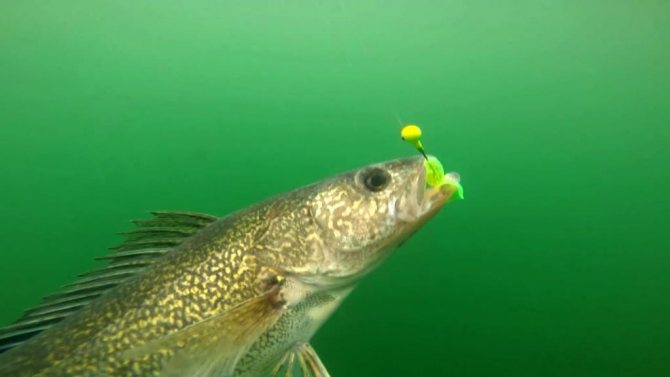
When choosing a fishing line, anglers pay attention to the markings. The packaging contains information about the length, diameter of the product, tensile strength (for America in pounds, for the Russian Federation - in kilograms). There are certain unified indicators. For example, if the number 0.03 is indicated on a foreign-made monofilament thread, this means that the diameter of the product corresponds to 0.029 mm. The numbering is applicable not only for monofilament fishing line, but also for braided line.
Some people ask why there is such precision when indicating parameters down to hundredths of digits, since they are already in millimeters. Such accuracy of calibration and other indicators indicates high quality of the product, and is also necessary for recording records or competition results. For example, in America, fishing competitions are quite common, during which the caught prey is fixed on a certain fishing line diameter.
Best monofilament for fishing: top 5
The Russian market offers a fairly large number of monofilaments from different manufacturers. Which one to choose? Based on feedback from both consumers and professional fishermen, the best manufacturers of monofilament fishing lines were selected.
Top 5 monofilament manufacturing companies (photo):
1. Sunline Troutist USC.

This fishing line is first in the ranking of the best fishing products presented on the Russian market. It has a good price-quality ratio, ideal characteristics and properties necessary for water hunting.
2. Varivas Super Trout.
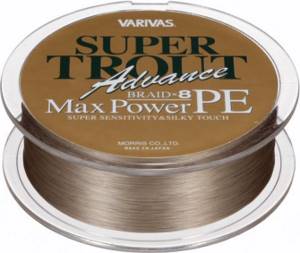
Monofilament, which is valued among amateur fishermen. Initially, it was intended by the manufacturer for trout fishing, but is actively used for hunting perch, asp and chub. It has good properties, minimal tendency to twist, and therefore is easy to use.
3. YGK Ambercord SG.
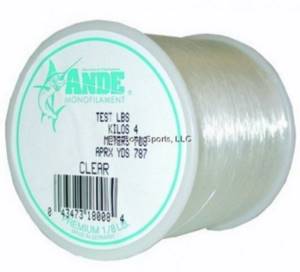
This is an ultra-thin monofilament that was developed specifically for ultralight. The product has a small diameter and is optimally suited for spinning. The line is UV resistant, abrasion resistant and has minimal loosening at the knots.
4. Balsax RXR Kameleon
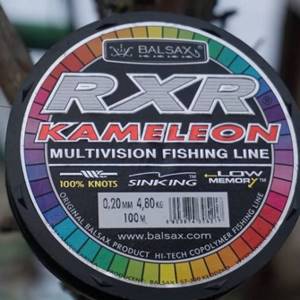
A new generation monofilament line that can change colors depending on water hunting conditions. It has increased strength, abrasion resistance and can be used regardless of the size of the predator or the nature of the bait.
5. Sunline Super Natural

This is a budget option that is of good quality. The line can be transparent or green, it is stretchable, durable and abrasion resistant.
Rating
Today the market for such fishing gear is very diverse. However, Japanese developments are considered the highest quality (but, alas, also expensive). However, other manufacturers also have their achievements.
- Shimano BlueWing. It is considered a bestseller, being a high-quality budget option.
- Varivas Super Trout. Contains new generation nylon; Ideal for a float rod.
- Benkey. A very strong vein, but also very expensive.
- Soft. Immensely popular among spinners.
- Tarantula. For lovers of big trophies.
- Shimano Antares Fluorocarbon. Manufacturers have managed to practically destroy the memory effect.
- Hi-Max Fluorocarbon. A hard, green vein for fishing in waters rich in vegetation.
- Chameleon. A curious vein that can change color in different bodies of water.
What to look for when purchasing
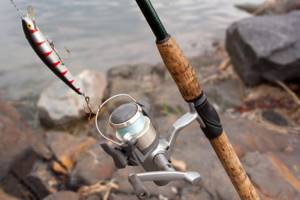
When purchasing polypropylene monofilament, you should pay attention to its main characteristics indicated on the packaging. These indicators include: diameter, breaking load, elongation, memory, rigidity, hydrophobicity, transparency. All this is indicated in the form of markings on the packaging. If the information on the pack is barely noticeable or the line itself is laid unevenly, this already indicates low quality of the product.
When purchasing, you should not pay attention to such catchy words that can be printed on the packaging such as “the best”, “especially soft and durable”, “coated with Teflon”. Often, this is simply a marketing ploy, and not the properties of the product itself.
When choosing, you should also focus on price. Too low a price means that the product will not last long. But if you don’t know what monofilament is and are choosing a product for one time, then the cheapest option will do.
Also, when choosing, it is worth considering the nature of the reservoir. In an alkaline environment, even the most expensive monofilament fishing line cannot withstand even two fishing trips, but in clean waters it can last up to 4 years.
When purchasing, pay attention to the reel and packaging, which should not be damaged. If possible, stretch the line and check its strength.
Monofilament or braid: what to choose for spinning?
Choosing a fishing line - braid or monofilament net - is a difficult task for every novice angler. What is better for spinning? It depends on the individual preferences of the fish hunter, since both one and the second option are suitable and have their own advantages and disadvantages.
Monofilament is a traditional fishing line for spinning, but braided line has appeared relatively recently. And immediately fishermen began testing the new product, noting its shortcomings compared to monofilament. Although in some cases braided thread has great advantages, it cannot fully replace monofilament.
The question of which fishing line is better is considered incorrect by fishermen, since everything here depends not on the variation of the product, but on its quality, as well as the manufacturer.
When to use spinning line?
Situations often arise on the river when it is more advisable to use monofilament fishing line. There are fishing methods in which the use of nylon is completely preferable. So, monofilament is used in the following situations:
- Catching perch or pike with rotating lures.
- Hunting for asp at an ultra-long distance.
- Trout or chub fishing.
The line can be used in other situations. Its main difference from braided cord is its stretchability. In some situations, this quality has a negative effect on fishing, and sometimes it has a positive effect.
For example, in jig fishing, stretch line does not provide the sensitivity that braid provides. The fisherman cannot detect a large number of bites and make an effective hook. This is, without a doubt, a big disadvantage of nylon.
Another situation is fishing for chub on a small river in clear water with ultralight. The predator sees the braided line well and is afraid to attack the bait. An inconspicuous monofilament fishing line of small diameter does not frighten the big-headed fish, and he grabs a wobbler or spinner. In addition, the stretchability of the monofilament makes it possible to bring out a weighty trophy, since it dampens the jerks of the fish well.
From what is written above, it becomes clear that a spinning rod must have a nylon fishing line. It is important to use it in the right conditions with suitable baits. The disadvantages of monofilament are as follows:
- Extensibility, which significantly reduces the sensitivity and rigidity of the tackle (relevant for jigging and fishing with jerk baits).
- Low breaking load compared to braid.
- Short-lived.
- Has memory.
The advantages of monofilament fishing line include the following:
- All the same stretchability (shock-absorbing properties).
- Stealth.
- Slippery and smooth structure.
- Good abrasion resistance
- Low cost.
- Availability and wide choice on the market.
The line is resistant to low temperatures. Under their influence, it does not change its structure and retains its properties. It is often used in winter spinning. The article about cords will tell you about the advantages of braid.
Basic requirements for spinning fishing line
Which fishing line should you choose for a spinning rod in order to comfortably catch a predator on a pond? The first important point in choosing monofilament is its diameter. It should not be too thin so that the likelihood of breakage is minimal. However, thick nylon is also bad - the casting range will be significantly reduced, and the tackle will become noticeable. Therefore, choosing a fishing line for spinning comes down to assessing the following factors:
- Likely size of the trophy.
- Type and weight of bait used.
- Fishing conditions (presence of algae and snags, water transparency, bottom structure, etc.).
Which is better fishing line for spinning, transparent or colored? Bright monofilament is clearly visible visually, making it easier for the spinner to control the retrieve and location of the bait in the water. This makes fishing much easier, especially for a beginner.

